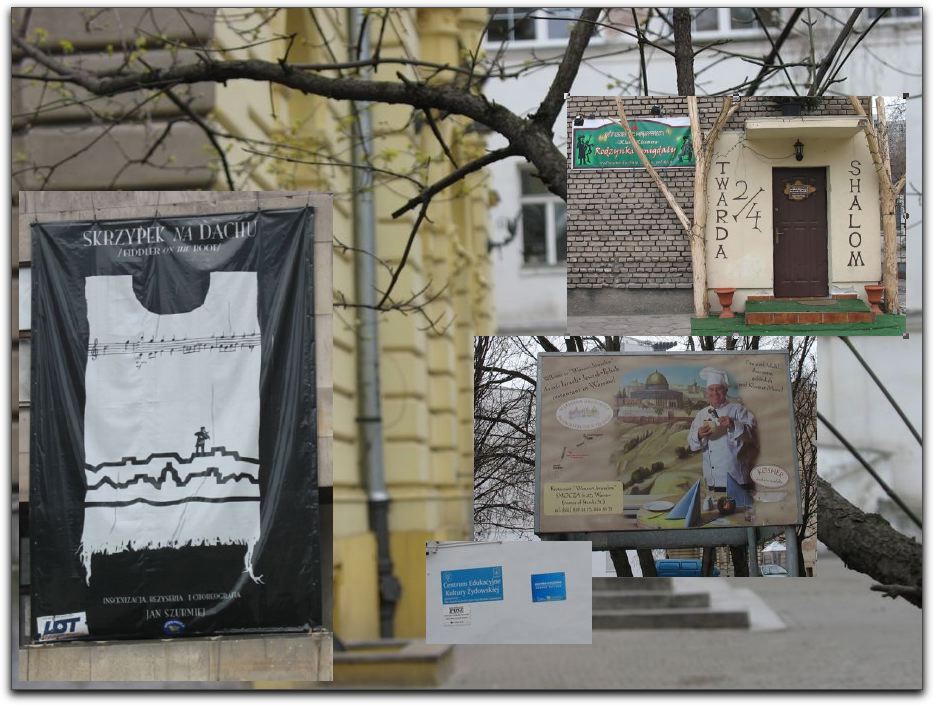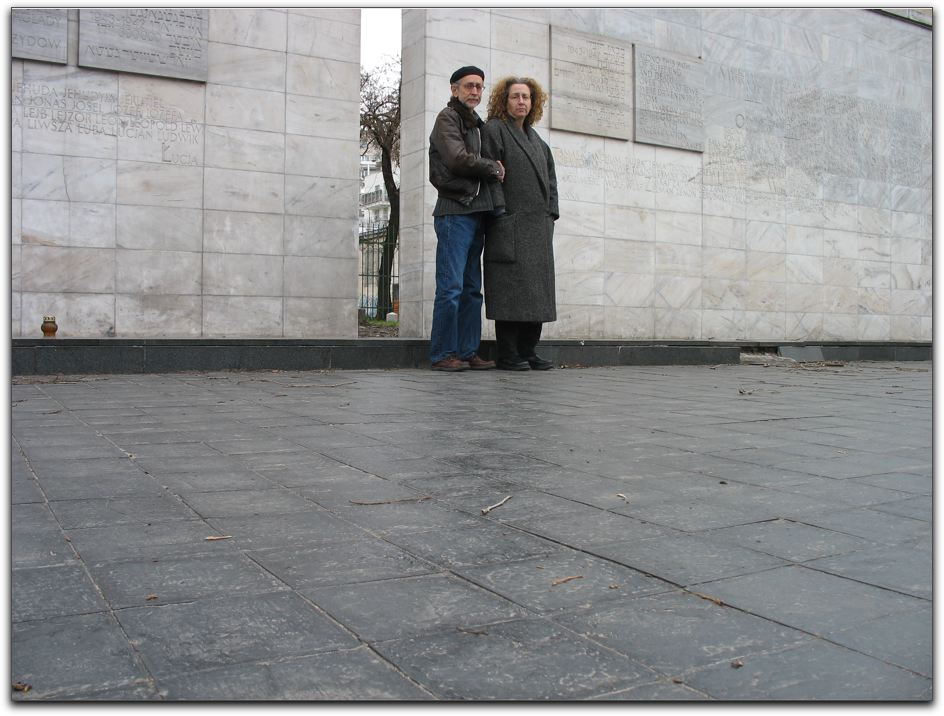
The Hurvitz family has long been intensely aware of the struggles of the Jewish people against Nazi aggression. Mark's Dad had come back from the army during WWII concerned that everyone should know that Jews did not all go "as sheep to the slaughter". For as long as I (Mark) can remember we sang Zog Nit Keyn Mol at our Passover Seders. When Libbe was still at home, she would sing and play the Partizaner Lid (Shtil Di Nacht). So, it should not be surprising that, when in Warsaw, we made made a special point of visiting the various locations and memorials related to the Warsaw Ghetto Uprising. We got the list and locations and drove the 15 or so kilometers into downtown Warsaw.
We were able to park directly across the street from the Umshlagplatz.

This was the location to which Jews were sent for embarkation on the trains that took them to the death camps. I looked for our names.

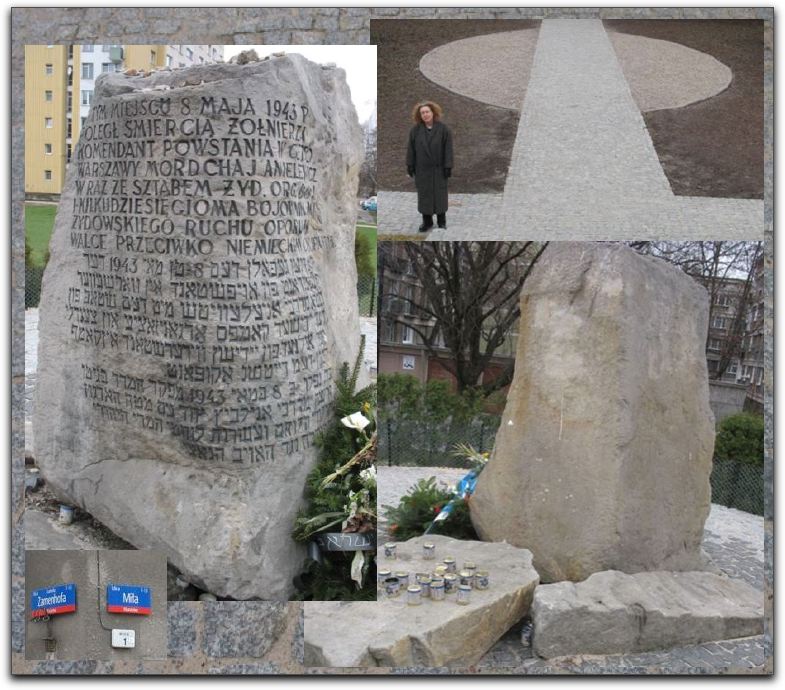
Nearby we saw a number of nearly meter-cubed black granite monuments.We don't know how they were spaced. Each one had the name and short description of the life of one or another of the fighters in the uprising, some however hard to read.
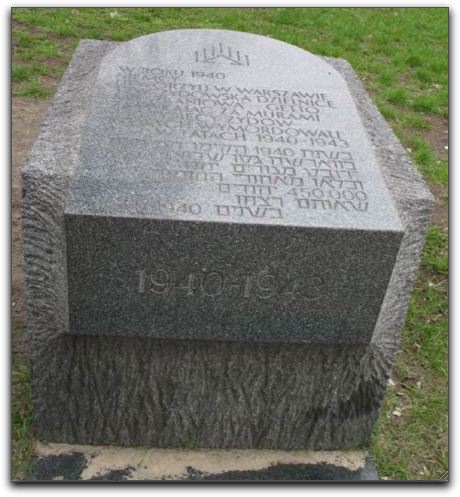
From Mila 18 to the large open park with the main official monument, we passed a monument we had not known about before (nor was it marked on our map) to Szmul Zygelbojm. This was of particular interest to Mark for a few reasons. Approximately thirty-five years earlier I (M) had been asked (as the representative to the "youth" of Los Angeles) to give the greetings at the annual Holocaust Commemoration event... at which Avrum Zygelbojm (Szmul's last surviving brother, a friend our my parents and someone who would yet become our teacher at HUC-JIR) read his brother's "Last Testament". This is a rather complex memorial. It has a highly reflective wall with a short quote from Zygelbojm's statement, in Polish and Yiddish, as well as an etching of human figures in the background. Off to the left is what seems to be an inscription, but my Polish is not good enough to understand it. In front of the wall is a low-laying broken plinth and in front of that, yet another large stone.
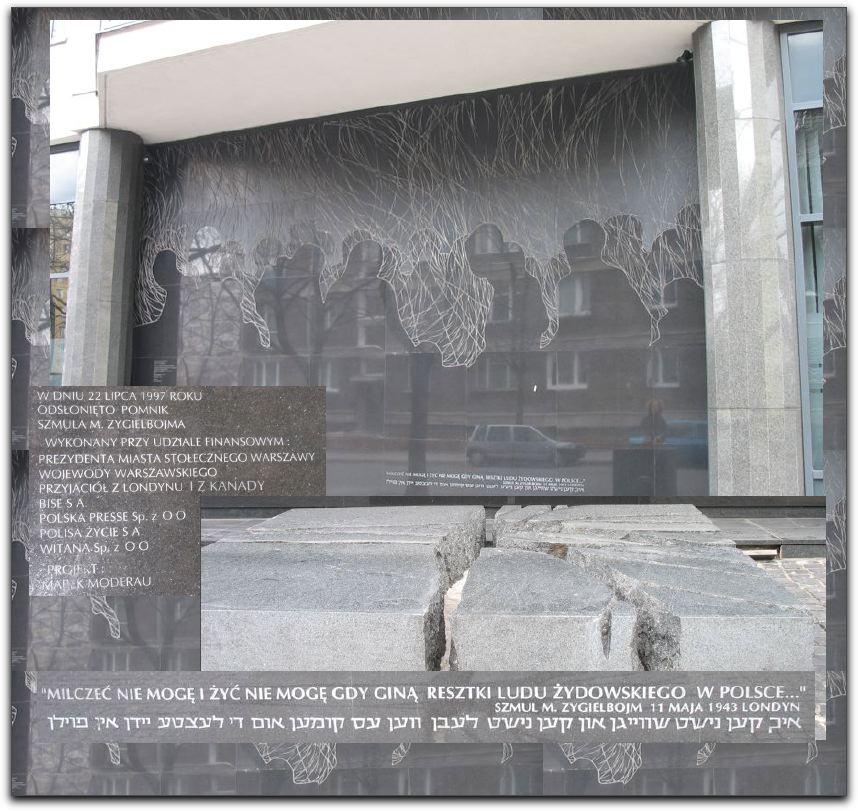
The well-known Warsaw Ghetto Uprising memorial monument, which is reproduced at Yad VaShem, is visible from the Zygelbojm monument. Many photographs of this exist in books and on the Web. We were struck by a number of little blue Israeli Yahrtzeit candles that had been lit by an Israeli delegation not long before our arrival.
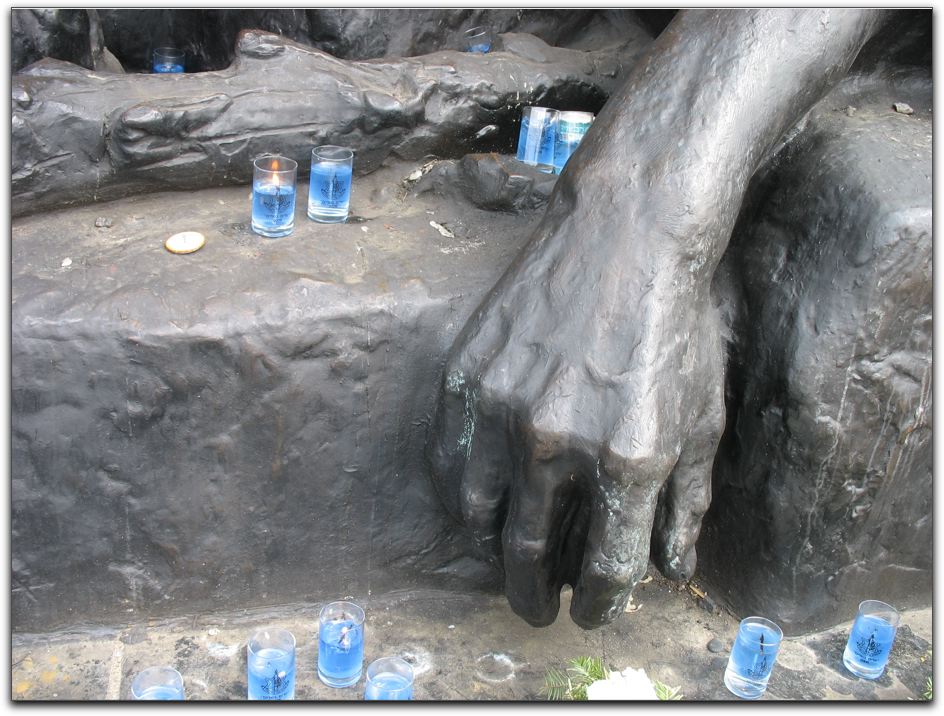
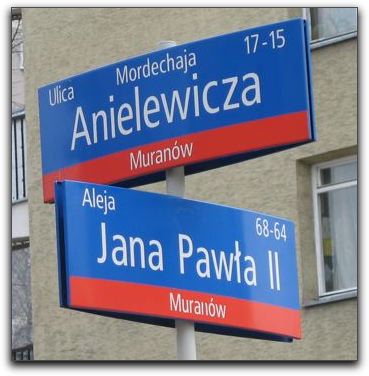
Finding a portion of the last remaining Ghetto wall was tough, basically a space between some streets.

Finally locating it, we found significant "plaquage", including a map of the Ghetto and significant spots of interest pointed out.
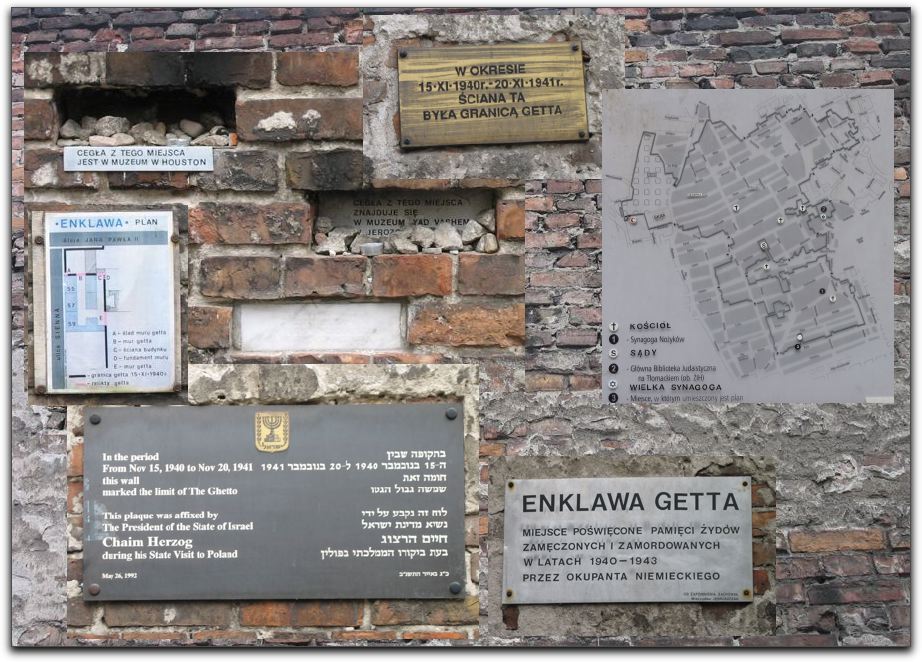
It seems that museums can remove a brick for their own displays!
The path at my (m)feet there looked like it dated from the same period.
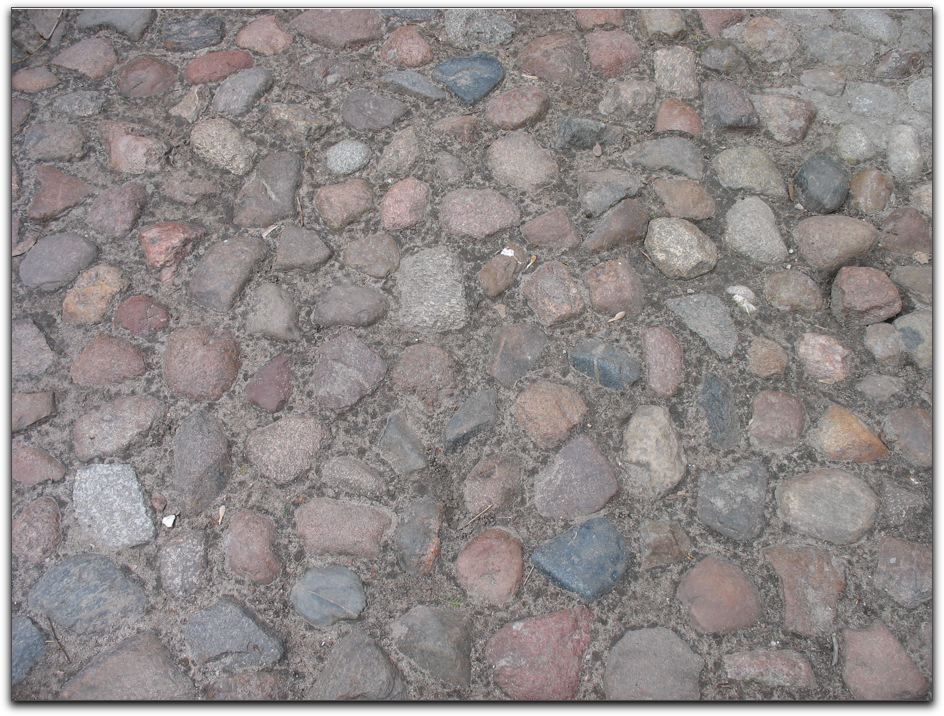
On our return walk to the van I (m) found an announcement of a performance of Brecht and Weill's Happy End (that we would, of course, sadly, miss).

As if this was not sufficient "Jewish" theater and music, not far from there was the Ida Kaminska Yiddish Theater that was performing (of all things!) Fiddler On The Roof. This is clearly a center of Jewish life in Warsaw as across the courtyard is one Jewish restaurant and a billboard of another. Around the corner is the functioning Orthodox synagogue.
